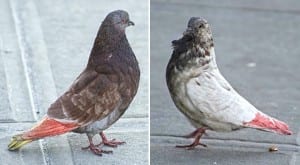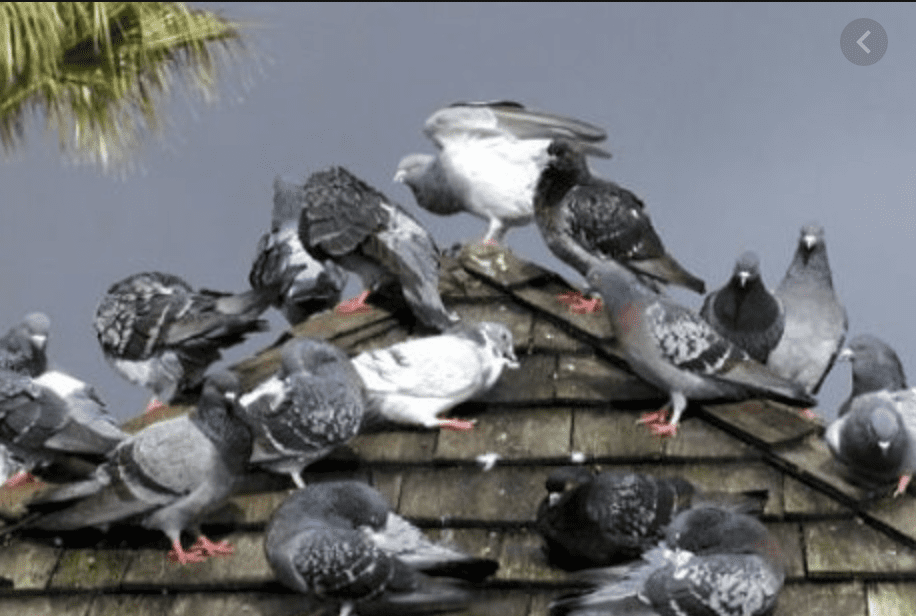
by Pigeon Patrol | Sep 18, 2023 | 4-S Gel Bird repellent, Animal Deterrent Products, Bird Deterrent Products, Bird Law, Bird Netting
Pigeons can present a number of problems and hazards, especially when they congregate in large numbers. Their droppings are not only unsightly, they are also dangerous and corrosive. In this post we look at practical steps that can be taken to get rid of problematic pigeons.
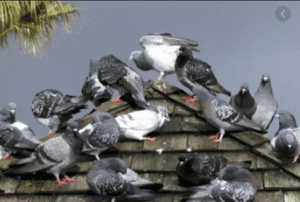
Pigeon Pest Control and the Law
Before considering various techniques to eradicate the presence of pigeons its important to be aware of the UK law regarding wild birds. This is legislated by the Department of Environment, Food and Rural Affairs (DEFRA) and detailed in the Wildlife and Countryside Act 1981 (Chapter 69).
This states that wild birds, along with their nests and eggs, are protected by UK law making it illegal to destroy or interfere with them, except under licence. If a licence is obtained, non-lethal methods of pigeon pest control should always be considered first as lethal methods have been found to be totally ineffective. Killing off existing pest pigeons simply reduces the competition for food and shelter prompting the remaining pigeons to increase their breeding rates to compensate.
People troubled by pigeons building nests and laying eggs often ask: How can I remove a pigeon’s nest? While the humane solution may appear to be relocating the nest to a more suitable location, the nest and eggs are protected by the Wildlife and Countryside Act from 1981, so moving them is against the law.
What is a Feral Pigeon?
Feral pigeons are all descended from domestic pigeons which were originally bred from rock doves whose natural habitat is seaside cliffs and mountains. Rock doves, domestic pigeons and feral pigeons are all the same species.
People often want to know if Feral Pigeons and Wood Pigeons are the same. Wood pigeons are the largest amongst the pigeon family. They are fatter than feral pigeons and prefer a diet of leaves, berries and fruits. They also prefer to construct their nests in quiet woodland and park areas and therefore don`t tend to become pests.
Where do Pigeons Nest?
Feral pigeons have readily adapted their nesting habits from the seaside cliffs and mountains, preferred by rock doves, to our urban environments. The birds will roost and nest on almost any horizontal surface that provides a small amount of shelter. Ledges, balconies, rooftops and empty buildings are all typical nesting sites.
Feral pigeons tend to build their flimsy platform nests from twigs but will also use whatever is available, such as rubbish and pieces of plastic. Peak breeding season is between March and July but nest building will often begin in February.
How Many Eggs Does a Pigeon Lay?
Its interesting to note that pigeons are monogamous and will mate for life. Female pigeons reach sexual maturity after just 7 months and 8 to 12 days after mating will lay between 1 and 3 eggs, typically 2. The eggs are incubated for around 19 days and the hatched pigeon chicks (squabs) are fledged and leave the nest after around 30 to 37 days.
Pigeons can breed at any time of year but peak reproduction takes place in the spring and autumn.
How Long Does a Pigeon Live For?
In captivity pigeons have been known to live as long as 15 years. But in urban environments a pigeon lifespan of around 2 to 3 years is more common.
Do Pigeons Carry Diseases?
People often want to know, are pigeons dirty and do they carry disease? Pigeons can carry a range of diseases that include salmonellosis, tuberculosis and ornithosis which can potentially infect humans. In fact pigeons are known to carry in excess of 60 pathogens which is common in wild birds.
Dead pigeon caracasses, pigeon droppings and nesting materials can also contain a variety of mites and insects which may cause disease, skin irritation and allergic reactions.
Does Pigeon Poop Damage Buildings?
Pigeon droppings are not only unsightly, dangerously slippery and infectious they can also damage buildings. The acid content in pigeon droppings can lead to the deterioration of soft stone, causing long term damage. Accumulated pigeon droppings can be difficult and expensive to remove without causing further damage.
Pigeon Control Methods
It should be noted that one of the most effective ways to restrict the size of pigeon flocks in any location is to control the availability of food. Limited food supply will reduce the number of new birds arriving at a site and suppress breeding.
As noted, under UK law, shooting pigeons isn’t allowed without a licence. Similarly, baiting and poisoning pest pigeons isn’t allowed and can present risks for other animals. Trapping problem pigeons is another tactic that might be considered but is recognised as ineffective and expensive and should only ever be carried out by professionals.
What is the Best Pigeon Deterrent?
To avoid the health risks associated with pigeons along with the mess and potential property damage they cause we often need to discourage and prevent them from from roosting or nesting on or around our homes and property. Legal restrictions mean that only humane, harmless techniques can be employed, so what are the best available pigeon deterrents?
What Do Pigeons Hate?
As noted, pigeons avoid areas where there is poor food supply so this needs to be considered. They also dislike the presence of birds of prey and they don’t like strong aromas such as cinnamon or hot pepper. And like all birds, pigeons are sensitive to fire and can see the ultraviolet light emitted by burning materials which they will naturally avoid.
Minimising the availability of food combined with spraying areas with strong smells can be an effective deterrent tactic.
Pigeon Repellent Gel
Pigeon repellent gel is also known as Bird Free Fire Gel and Bird Free Optical Gel. Its an extensively proven material that prevents all birds, including pigeons, from nesting and roosting where they are not welcome.
The gel is formulated from natural oils and food grade ingredients which, in combination, emit UV light that looks like a naked flame to birds. Locating small containers of this exceptional material in areas where pigeons like to land and roost has an immediate effect. Birds see the gel as a naked flame and their natural instinct is to keep away. In addition, the gel is formulated with a mild peppermint and black pepper aroma which acts as a further deterrent.
Bird Free Fire Gel is available in convenient preloaded dishes along with fixings to securely attach the dishes to pipes, railings and other perches favoured by pigeons.
Anti Bird Netting
Anti-bird netting is also known as pigeon netting, bird control netting or simply bird netting. Netting provides a highly effective anti-bird barrier but is often considered unsightly. Its commonly used to protect:
- Fruit trees and bushes
- Balconies
- Outdoor eating areas
- Courtyards
- Patios
- Signage
- Car parking areas
Bird Deterrent Pigeon Wire
Parallel wire bird-deterrent systems provide an alternative to bird netting. Lengths of parallel steel wires are installed in areas to which pigeons are naturally attracted, such as rooftops, balconies and eves. Pigeons will seek alternative areas to roost and build their nests when they encounter these wires.
Anti Bird Spikes
Anti bird spikes are a well known, highly effective anti bird device. They are simply strips of harmless spikes mounted in areas where pest pigeons like to land. When they encounter the spikes, they steer clear.
Anti pigeon spikes5 are made from lightweight polycarbonate while anti-seagull spikes are made from tougher stainless steel that can withstand seagull beaks. Gutter fixing clips make it quick and easy to install these effective pigeon deterrent spikes where pigeons like to perch.
Birds of Prey and Decoys
As previously noted, pigeons don’t like dominant birds of prey and will avoid their territories. Using birds of prey for pest control is marketed as a green, natural and humane tactic as it is considered to be non-lethal. But since raptors cannot be trained not kill the target species and the majority of raptors used for pigeon control are not their natural predators this technique shouldn’t really be considered as ‘natural’. Another important consideration when using birds of prey to dispel problematic pigeons is that it`s generally employed for short term bird clearance, for example at football grounds and sports arenas.
A genuinely safe, humane alternative is to use replica raptors. Replicas of hawks, falcons, owls and other birds of prey have long been used as bird repellents in a variety of situations.
How to Get Rid of Pigeons from Your Roof
If you are troubled by pigeons congregating on a rooftop a variety of techniques can be used to keep them away. As noted, if the birds have created nests and laid eggs you will need to wait until the chicks have fledged before taking steps to keep the pest pigeons away.
Containers filled with pigeon repellent fire gel distributed around the rooftop areas favoured by the birds has been found to be highly effective and easy to install.
Anti bird netting covering the whole rooftop area is highly effective but can be tricky to install and must be maintained. Similarly, parallel anti bird wires can be effective along ledges, guttering and rooftop edges. And anti-bird spikes work well when mounted along favoured perch areas.
How to Get Rid of Pigeons from Your Balcony
People like to make the most of their balconies, especially in the warmer months. But pest pigeons can turn balconies into dangerous health hazards.
One of the most effective techniques to protect a balcony from pest birds is to shroud the whole balcony in anti bird netting. But obviously many people will consider this tactic to be unsightly, especially during the warmer months when they want to use their balconies. The deployment of bird repellent fire gel in small dishes, distributed along the balcony rail and wherever birds are inclined to land, has been found to be highly effective in keeping balconies free from pest pigeons.
How to Get Rid of Pigeons Under Solar Panels
More and more homes are installing solar power with rooftop mounted solar panels. These installations naturally attract the attention of pest pigeons who are seeking safe locations to build their nests and raise their young.
Bird Free Fire gel has been successfully deployed around many solar panel installations, effectively preventing problem pigeons from establishing their nests.
Source
Pigeon Patrol
Pigeon Patrol Products & Services is the leading manufacturer and distributor of bird deterrent (control) products in Canada. Pigeon Patrol products have solved pest bird problems in industrial, commercial, and residential settings since 2000, by using safe and humane bird deterrents with only bird and animal -friendly solutions. At Pigeon Patrol, we manufacture and offer a variety of bird deterrents, ranging from Ultra-flex Bird Spikes with UV protection, Bird Netting, 4-S Bird Gel and the best Ultrasonic and audible sound devices on the market today.
Canada’s top wholesaler for bird deterrent products for twelve consecutive years.
Contact us at 1- 877– 4– NO-BIRD, (604) 585-9279 or visit our website at https://www.pigeonpatrol.ca/
Bird Gone, Pigeon Gone, Pigeon problems, pigeon spikes, 1-877-4NO-BIRD, 4-S Gel, Bird Control, Pigeon Control, bird repellent, Bird Spikes, sonic bird repellent, stainless steel bird spikes, bird spikes Vancouver, Ultra Sonic Bird Control, Bird Netting, Plastic Bird Spikes, Canada bird spike deterrents, Pigeon Pests, B Gone Pigeon, Pigeon Patrol, pest controller, pest control operator, pest control technician, Pigeon Control Products, humane pigeon spikes, pigeon deterrents, pigeon traps, Pigeon repellents, Sound & Laser Deterrents, wildlife control, raccoon, skunk, squirrel deterrent, De-Fence Spikes, Dragons Den, Pigeon, Pigeon Patrol, Pigeons Roosting, Vancouver Pigeon Control, Bird Spikes, Bird Control, Bird Deterrent, Pigeon Deterrent, Surrey Pigeon Control, Pest, Seagull deterrent Vancouver Pigeon Blog, Birds Inside Home De-fence, Pigeon Nesting, Bird Droppings, Pigeon Dropping, woodpecker control, Keep The Birds Away, Birds/rats, seagull, pigeon, woodpecker, dove, sparrow, pidgeon control, pidgeon problem, pidgeon control, flying rats, pigeon Problems, bird netting, bird gel, bird spray, bird nails, bird guard, Pigeon control, Bird deterrents, Pigeon deterrents, Bird control, solutions, Pigeon prevention, Pigeon repellent, Bird proofing, Pest bird management, Pigeon spikes, Bird netting, Humane bird control, Bird exclusion, Urban bird control, Anti-roosting devices, Pigeon removal, Bird barriers
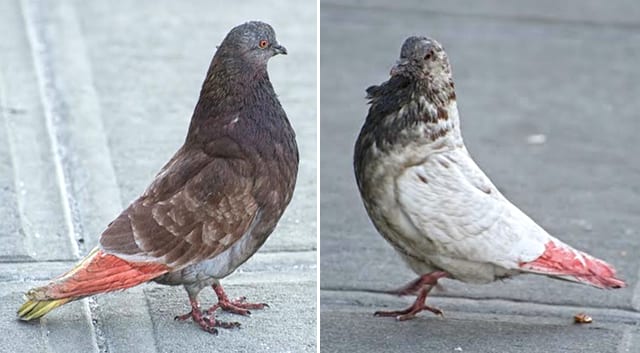
by Pigeon Patrol | Sep 11, 2023 | Bird Netting, Bird Spikes, Doves, history of pigeons, MBCA, pet bird, Pigeon Control
The pigeon problem in Kirkland Lake is so bad, police felt the need to issue a news release this morning warning residents to follow the law when dealing with them.
The town started renting out traps to residents today to capture pigeons, and police say that trappers will be responsible for the disposal of the birds, which includes a ban on throwing them in the garbage for curbside pickup. Successful trappers will instead have to take the pigeons for burial at the town dump.
“The OPP want to inform the residents that it is each individual’s responsibility to educate themselves on this topic and to ensure that they are acting within the laws, regulations and town by-laws,” says Constable Adam Gauthier.
The problem started, says Ashley Bilodeau, Kirkland Lake’s Manager of Planning and Land Development, when a few bird lovers started feeding the pigeons.
“We have a couple of residents that have been obnoxiously feeding pigeons to the point where we have some serious problem areas, so we passed a no-feeding bylaw back in the fall,” she told BayToday. “However, there is one individual who just continues to feed them despite the bylaw and has been charged. There’s been a few charges laid around town but there is one individual who is causing more headaches than normal.”
The fine for feeding is steep at $100, and that’s down from the $250 the town wanted to charge but the province wouldn’t allow it.
“So we’re trying to find different ways to combat the issue because it’s now causing problems to people’s properties and vehicles because there are so many of them.”
Bilodeau says the town has checked with the MNRF and it’s not illegal to kill pigeons although you are required to have a small game licence in order to trap and kill pigeons.
The town has not placed a limit on the number of pigeons people can capture, but police warn folks can’t use their guns to shoot the birds because discharging a firearm is prohibited within the Town of Kirkland Lake,
Bilodeau says poop is the problem.
“They’re also causing damage to buildings by trying to build nesting areas,” she adds. “We’ve got four traps here and people can come in and put in a deposit and take the trap for 10 days, and when they bring it back they get their money back.”
Pigeons were originally bred from the wild rock dove, which naturally inhabits sea-cliffs and mountains according to Wikipedia, so the bird finds the ledges of buildings to be a substitute for sea cliffs.
They have become abundant in towns and cities throughout the world. Due to their abilities to create large amounts of excrement and to carry disease, combined with crop and property damage, pigeons are largely considered a nuisance with steps being taken in many municipalities to lower their numbers or completely eradicate them.
Source
Pigeon Patrol
Pigeon Patrol Products & Services is the leading manufacturer and distributor of bird deterrent (control) products in Canada. Pigeon Patrol products have solved pest bird problems in industrial, commercial, and residential settings since 2000, by using safe and humane bird deterrents with only bird and animal -friendly solutions. At Pigeon Patrol, we manufacture and offer a variety of bird deterrents, ranging from Ultra-flex Bird Spikes with UV protection, Bird Netting, 4-S Bird Gel and the best Ultrasonic and audible sound devices on the market today.
Canada’s top wholesaler for bird deterrent products for twelve consecutive years.
Contact us at 1- 877– 4– NO-BIRD, (604) 585-9279 or visit our website at https://www.pigeonpatrol.ca/
Bird Gone, Pigeon Gone, Pigeon problems, pigeon spikes, 1-877-4NO-BIRD, 4-S Gel, Bird Control, Pigeon Control, bird repellent, Bird Spikes, sonic bird repellent, stainless steel bird spikes, bird spikes Vancouver, Ultra Sonic Bird Control, Bird Netting, Plastic Bird Spikes, Canada bird spike deterrents, Pigeon Pests, B Gone Pigeon, Pigeon Patrol, pest controller, pest control operator, pest control technician, Pigeon Control Products, humane pigeon spikes, pigeon deterrents, pigeon traps, Pigeon repellents, Sound & Laser Deterrents, wildlife control, raccoon, skunk, squirrel deterrent, De-Fence Spikes, Dragons Den, Pigeon, Pigeon Patrol, Pigeons Roosting, Vancouver Pigeon Control, Bird Spikes, Bird Control, Bird Deterrent, Pigeon Deterrent, Surrey Pigeon Control, Pest, Seagull deterrent Vancouver Pigeon Blog, Birds Inside Home De-fence, Pigeon Nesting, Bird Droppings, Pigeon Dropping, woodpecker control, Keep The Birds Away, Birds/rats, seagull, pigeon, woodpecker, dove, sparrow, pidgeon control, pidgeon problem, pidgeon control, flying rats, pigeon Problems, bird netting, bird gel, bird spray, bird nails, bird guard, Pigeon control, Bird deterrents, Pigeon deterrents, Bird control, solutions, Pigeon prevention, Pigeon repellent, Bird proofing, Pest bird management, Pigeon spikes, Bird netting, Humane bird control, Bird exclusion, Urban bird control, Anti-roosting devices, Pigeon removal, Bird barriers
y/bird nails/bird guard
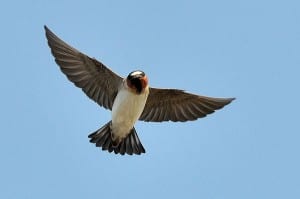
by Pigeon Patrol | Sep 11, 2023 | 4-S Gel Bird repellent, Animal Deterrent Products, Bird Deterrent Products, Bird Law, Bird Netting
Since European settlement, many granivorous birds of northern Australia’s savanna landscapes have declined. One such example, the partridge pigeon (Geophaps smithii), has suffered a significant range contraction, disappearing from at least half of its pre-European range. Multiple factors have been implicated in this decline, including the loss of traditional Aboriginal burning practices, grazing by large exotic herbivores and predation by feral cats (Felis catus). While populations of partridge pigeon on the Tiwi Islands may be particularly important for the long-term persistence of this species, they too may be at risk of decline. However, as a reliable method to detect this species has not yet been developed and tested, we lack the ability to identify, at an early stage, the species’ decline in a given location or region. This severely limits our capacity to make informed management decisions. Here, we demonstrate that the standard camera trapping approach for native mammal monitoring in northern Australia attained an overall probability of detecting partridge pigeon greater than 0.98. We thus provide a robust estimate of partridge pigeon site occupancy (0.30) on Melville Island, the larger of the two main Tiwi Islands. The information presented here for the partridge pigeon represents a critical first step towards the development of optimal monitoring programmes with which to gauge population trajectories, as well as the response to remedial management actions. In the face of ongoing biodiversity loss, such baseline information is vital for management agencies to make informed decisions and should therefore be sought for as many species as possible.

Source
Pigeon Patrol Products & Services is the leading manufacturer and distributor or bird deterrent (control) products in Canada. Pigeon Patrol products have solved pest bird problems in industrial, commercial, and residential settings since 2000, by using safe and humane bird
deterrents with only bird and animal friendly solutions. At Pigeon Patrol, we manufacture and offer a variety of bird deterrents, ranging from Ultra-flex Bird Spikes with UV protection, Bird Netting, 4-S Bird Gel and the best Ultrasonic and audible sound devices on the market today.
Voted Best Canadian wholesaler for Bird Deterrent products ten years in a row.
Contact us at 1 877-4-NO-BIRD,(604) 585-9279 or visit our website at www.pigeonpatrol.ca
Pigeon/Pigeon Patrol / Pigeons Roosing / Vancouver Pigeon Control / Bird Spikes / Bird Control / Bird Deterrent / PIgeon Deterrent / Surrey Pigeon Control / Pest / Seagull deterrent / Vancouver Pigeon Blog / Birds Inside Home / Pigeons in the cities / Ice Pigeons / What to do about pigeons / sparrows, Damage by Sparrows, How to Keep Raccoons Away, Why Are Raccoons Considered Pests / De-fence / Pigeon Nesting / Bird Droppings / Pigeon Dropping / woodpecker control / Professional Bird Control Company / Keep The Birds Away / Birds/rats/seagull/pigeon/woodpecker/dove/sparrow/pidgeon control/pidgeon problem/pidgeon control/flying rats/pigeon problems/ bird netting/bird gel/bird spray/bird nails/bird guard
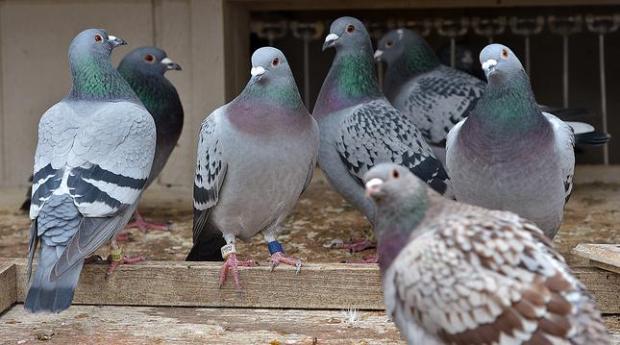
by Pigeon Patrol | Sep 7, 2023 | 4-S Gel Bird repellent, Animal Deterrent Products, Bird Deterrent Products, Bird Law, Bird Netting, Bird Spikes
Pigeons are always on the lookout for a source of food and buildings with plenty of high nooks and crannies to roost and nest in, and your factory might just fit the bill.
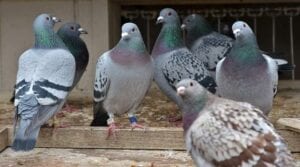
But if pigeons get into your factory, it’s a serious problem. These pest birds and their guano (poo) carry and spread some nasty diseases, and they can also damage property. This is bad news for any business, but if food is manufactured, packaged, and stored in your factory, it can be disastrous.
Before your reputation and your profits take a serious hit, read our advice on how you can keep pigeons out of your factory.
How to prevent pigeons from getting into your factory
First, eliminate any sources of food
Any sources of food will be very attractive to pigeons, and eliminating them will make your factory less desirable to roost or nest in. Keep your factory scrupulously clean and don’t leave food ingredients or waste lying around, inside or outside of the premises.
It’s also a good idea to talk to nearby businesses if their poor waste management or housekeeping practices are attracting pest birds to the vicinity.
Second, use deterrents
When you are trying to prevent pigeons from nesting or roosting in or on your property, deterrents like bird spikes, bird wire, and netting can be effective at keeping them at bay.
Third, fix up your factory
If there are holes in your factory roof or walls that you haven’t got around to fixing, you could inadvertently be providing pigeons with the perfect nesting place. Make sure you fix them up-deterring pigeons is all about making your factory much less attractive to them.
Finally, deal with the guano
As we mentioned earlier, pigeon droppings can contain some harmful bacteria, so we would recommend that you don’t try to clean it up yourself.
If pest pigeons have made a mess of your factory, call in the professionals. We will blast away guano with the right equipment and products so your premises is clean, safe, and hygienic again.
Do I need professional pigeon control for my factory?
As birds are protected by the Wildlife and Countryside Act 1981, it’s illegal to poison or shoot them if you don’t have a license. If you put poison down, you could harm other birds and end up in legal trouble. And not only that, if you’re a food business, you won’t be able to use toxic bird control methods anyway as you could contaminate your product.
If you hire professional pest control, you can get your pest problem dealt with fast. We can deal with any existing infestation, install effective bird-proofing and deterrents, and give you expert advice on preventing any problems in the future.
To protect your business, customers, and your reputation, professional pigeon control is your best bet.
Source
Pigeon Patrol Products & Services is the leading manufacturer and distributor or bird deterrent (control) products in Canada. Pigeon Patrol products have solved pest bird problems in industrial, commercial, and residential settings since 2000, by using safe and humane bird
deterrents with only bird and animal friendly solutions. At Pigeon Patrol, we manufacture and offer a variety of bird deterrents, ranging from Ultra-flex Bird Spikes with UV protection, Bird Netting, 4-S Bird Gel and the best Ultrasonic and audible sound devices on the market today.
Voted Best Canadian wholesaler for Bird Deterrent products ten years in a row.
Contact us at 1 877-4-NO-BIRD,(604) 585-9279 or visit our website at www.pigeonpatrol.ca
Pigeon/Pigeon Patrol / Pigeons Roosing / Vancouver Pigeon Control / Bird Spikes / Bird Control / Bird Deterrent / PIgeon Deterrent / Surrey Pigeon Control / Pest / Seagull deterrent / Vancouver Pigeon Blog / Birds Inside Home / Pigeons in the cities / Ice Pigeons / What to do about pigeons / sparrows, Damage by Sparrows, How to Keep Raccoons Away, Why Are Raccoons Considered Pests / De-fence / Pigeon Nesting / Bird Droppings / Pigeon Dropping / woodpecker control / Professional Bird Control Company / Keep The Birds Away / Birds/rats/seagull/pigeon/woodpecker/dove/sparrow/pidgeon control/pidgeon problem/pidgeon control/flying rats/pigeon problems/ bird netting/bird gel/bird spray/bird nails/bird guard
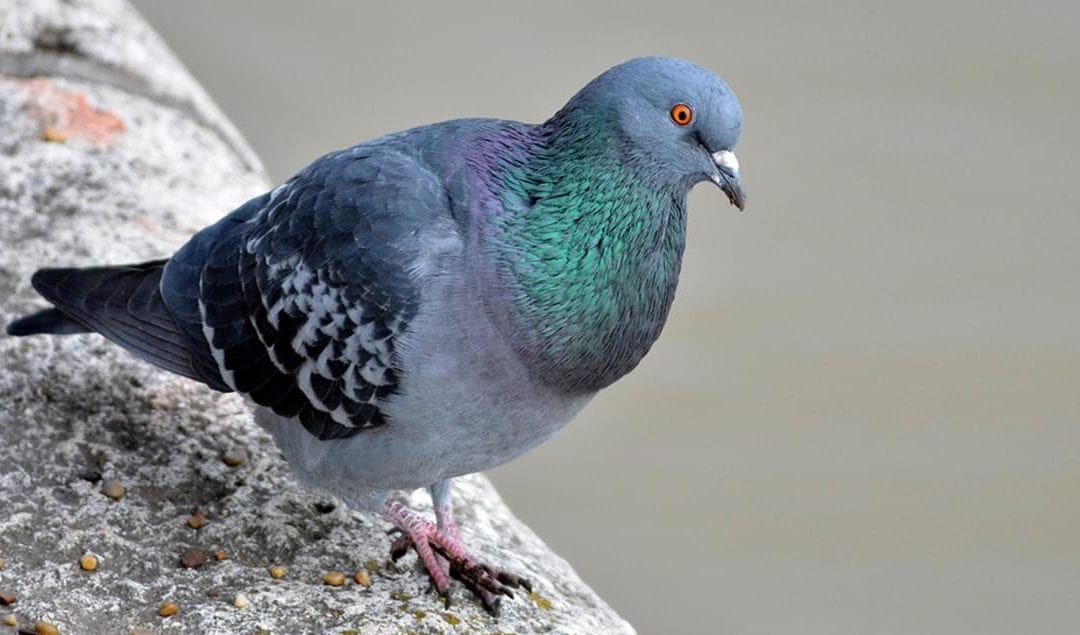
by Pigeon Patrol | Sep 7, 2023 | 4-S Gel Bird repellent, Animal Deterrent Products, Bird Deterrent Products, Bird Law, Bird Netting, Bird Spikes
The development of cities and urban sprawl has made room for wildlife inhabiting human environments. Among birds, feral pigeons (Columba livia domestica) are often present in large numbers in the cities. Problems related to pigeon occurrence result in economic loss and health issues for humans. There are different methods of controlling pigeon populations in urban areas. In this study, we compared three techniques that can be used for pigeon pest control. In two urban industrial sites in Hungary, we used trapping, falconry (in both Study Area 1 and 2) and mist-netting (only in Study Area 2) to remove pigeons. We compared the effectiveness and limitations of each method. Our results show that over 105 days in Study Area 1, we managed to remove 173 individual pigeons. We did not find a significant difference between the effectiveness of trapping or falconry. In Study Area 2, the overall number of pigeons removed was 1412 over a period of 150 days. There, we managed to catch significantly more birds by netting than by trapping or falconry, but the latter two did not differ statistically. We recommend a combination of techniques for pigeon control. Mist-netting can be the most effective way for direct pigeon removal, whereas trapping is an easier but less efficient method to catch pigeons. Falconry is the least efficient in pigeon catching and requires the most investments, but the bird of prey may chase the pigeons away for a short time.
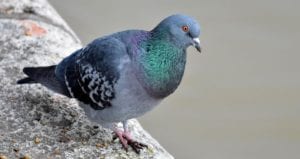
Source
Pigeon Patrol Products & Services is the leading manufacturer and distributor or bird deterrent (control) products in Canada. Pigeon Patrol products have solved pest bird problems in industrial, commercial, and residential settings since 2000, by using safe and humane bird
deterrents with only bird and animal friendly solutions. At Pigeon Patrol, we manufacture and offer a variety of bird deterrents, ranging from Ultra-flex Bird Spikes with UV protection, Bird Netting, 4-S Bird Gel and the best Ultrasonic and audible sound devices on the market today.
Voted Best Canadian wholesaler for Bird Deterrent products ten years in a row.
Contact us at 1 877-4-NO-BIRD,(604) 585-9279 or visit our website at www.pigeonpatrol.ca
Pigeon/Pigeon Patrol / Pigeons Roosing / Vancouver Pigeon Control / Bird Spikes / Bird Control / Bird Deterrent / PIgeon Deterrent / Surrey Pigeon Control / Pest / Seagull deterrent / Vancouver Pigeon Blog / Birds Inside Home / Pigeons in the cities / Ice Pigeons / What to do about pigeons / sparrows, Damage by Sparrows, How to Keep Raccoons Away, Why Are Raccoons Considered Pests / De-fence / Pigeon Nesting / Bird Droppings / Pigeon Dropping / woodpecker control / Professional Bird Control Company / Keep The Birds Away / Birds/rats/seagull/pigeon/woodpecker/dove/sparrow/pidgeon control/pidgeon problem/pidgeon control/flying rats/pigeon problems/ bird netting/bird gel/bird spray/bird nails/bird guard

by Pigeon Patrol | Jul 26, 2023 | 4-S Gel Bird repellent, Animal Deterrent Products, Bird Deterrent Products, Bird Law, Bird Netting, Bird Spikes, Columbidae, Doves
How to Deter Birds From the Garden
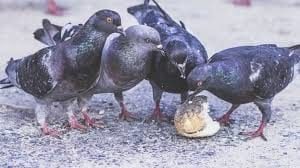
Birds are not picky eaters. They can feed on a number of things: seeds, grains, fruit, breadcrumbs, worms, and more.
Bird control is a hard job, especially if you have a vegetable garden. You’d want to keep birds as far away as possible. Even though it’s not easy, there are a few things you can do.
- Make a scarecrow or use decoy hawks and owls. Also, fake snakes could scare some of the birds.
- Use old CDs as shiny reflective objects to scare the birds. Hang a few of them every couple of meters around your garden.
- Buy or make bird nettings from cord or wire to protect your crops.
- Plants to distract them. You want to keep your crops intact and you’ve lost all hope of keeping the birds away? You can distract them by planting other seductive plants away from your vegetables. Plants like buckwheat, sunflowers, or some berries can be used to attract pigeons and other birds to the opposite side of your garden.
How to Keep Pigeons Away From Bird Feeders
Pigeons are a typical example of a bully bird that doesn’t allow smaller birds to get food. They are larger than most birds you can find in urban areas and this gives them some advantage in the race to get the food people leave behind.
You can keep pigeons and other bully birds away from your bird feeders by making it hard for them to reach it. How? By enclosing the bird feeder with hardware cloth with openings big enough so only smaller birds can get through and feed (5cm should be more than enough).
There are caged-in trays or tube bird feeders sold in garden or hardware stores you can purchase. The tray or tube is placed several centimetres inside of the cage and it makes it difficult for larger bully birds to eat the seeds.
Some bird species, like pigeons, the European starling, house sparrows, feed on the ground. If you remove all food sources from the ground and make a hanging bird feeder under a small shelter, they may get scared to get under the cover. With the lack of food, they will soon stop coming.
How to Get Rid of Pigeons With Poison
Poisoning pigeons and other birds is not recommended. There’s no need to kill the birds. You can simply take some measures to keep them away from your home or business building. A dead pigeon, filled with poison, laying somewhere in your garden might cause you more problems than a live one. Plus, you should consider the chance of poisoning other animals alongside the pigeons. Refrain from using poison as a bird control method, please.
How to Get Rid of Pigeons in Your Garden With Sound
Sounds can prove to be one of the most effective ways to keep birds away. You will need to invest some money to do it the right way but it will be worth it. There are a number of sounds that can do the trick.
Audible repellers produce frightening bird sounds that scare pigeons and other birds. There are different sounds – distressed cries of birds, shrieks of predator birds. The devices can be bought in most gardening stores.
Ultrasonic repellers emit high-frequency sounds that people cannot hear. The sounds are at a specific frequency targeted at birds.
How to Get Rid of Pigeons From Trees
Gather aluminium plates, mirrors, and other shiny objects. Hang them on your trees and they’ll create movements and reflect the sunlight. Thus they will scare off the pigeons and other birds from roosting on your trees.
Put a predator bird statue on the tree to scare the pigeons off. Most professional exterminators rely on this method as well.
Wind chimes can also scare pigeons away with the sound and movement they make, but if the pigeons get used to them they will not hesitate to roost on your trees.
Natural Pigeon Repellents and Control Methods
You have to be careful with the homemade repellents. Birds, especially pigeons are smart animals and can see through your scarecrows and tricks.
Homemade pigeon repellents and other repelling methods should be combined with preventive methods for full effect and protection.
Other natural ways to deal with bird control
Remove food and water sources. Keeping your property clean from seeds, grains and other food remains is a convenient way to have birds and pigeons skip your home and go to your neighbour’s’ yard. This can be done by regularly sweeping floors, keeping your garbage in the garbage can with a closed lid on it.
Gardens should be protected as well, either with decoy predator birds statues, sprinklers, sound repellents, or nets.
Make sure you don’t leave standing water anywhere around your home.
Removing the nest is essential because you are putting your home at risk of getting infested with bird mites.
Homemade Pigeon Repellents
As mentioned above, there are a number of bird repellents that can get the job done. But if you wish to deal with the issue without having to put a fake owl or spikes on your roof, you can try to make some homemade repellents.
1) Repel pigeons with honey – Applying a thin layer of honey to your roof or balcony will inconvenience birds and they won’t roost there. Honey’s stickiness will keep them away as birds do not like sticky surfaces. You can use other sticky products as well. You may have to reapply the sticky substance from time to time because it will wear off.
2) Hose the birds. You can instal automatic sprinkles on your roof or balcony to spray them when they land. Or you can do the work when you notice them. Hosing them a couple of times should be enough to teach them a lesson and keep them away.
3) Spicy pigeon repellent
Pigeons and other birds do not like spices. Which makes it a fantastic natural repellent for all kinds of birds.
4) Pepper powder can be used to repel pigeons from your balcony and roof. Sprinkle more of it on their roosting places and in other places they may roost. You can use black pepper, cayenne pepper or cinnamon powder to keep the pigeons off your property. You will have to reapply it after rainy or windy days.
5) Chilli powder is another spicy repellent that you can use. Throw chilli solution in the birds’ roosting places and watch how they stop coming back. Reapplying it may be also necessary after windy and rainy days. The chilli is also unpleasant to the pigeons and will drive them away from your home.
Take measures to keep birds away from your home now or call an expert to do it for you.
Source
Pigeon Patrol Products & Services is the leading manufacturer and distributor or bird deterrent (control) products in Canada. Pigeon Patrol products have solved pest bird problems in industrial, commercial, and residential settings since 2000, by using safe and humane bird
deterrents with only bird and animal friendly solutions. At Pigeon Patrol, we manufacture and offer a variety of bird deterrents, ranging from Ultra-flex Bird Spikes with UV protection, Bird Netting, 4-S Bird Gel and the best Ultrasonic and audible sound devices on the market today.
Voted Best Canadian wholesaler for Bird Deterrent products ten years in a row.
Contact us at 1 877-4-NO-BIRD,(604) 585-9279 or visit our website at www.pigeonpatrol.ca
Pigeon/Pigeon Patrol / Pigeons Roosing / Vancouver Pigeon Control / Bird Spikes / Bird Control / Bird Deterrent / PIgeon Deterrent / Surrey Pigeon Control / Pest / Seagull deterrent / Vancouver Pigeon Blog / Birds Inside Home / Pigeons in the cities / Ice Pigeons / What to do about pigeons / sparrows, Damage by Sparrows, How to Keep Raccoons Away, Why Are Raccoons Considered Pests / De-fence / Pigeon Nesting / Bird Droppings / Pigeon Dropping / woodpecker control / Professional Bird Control Company / Keep The Birds Away / Birds/rats/seagull/pigeon/woodpecker/dove/sparrow/pidgeon control/pidgeon problem/pidgeon control/flying rats/pigeon problems/ bird netting/bird gel/bird spray/bird nails/bird guard




